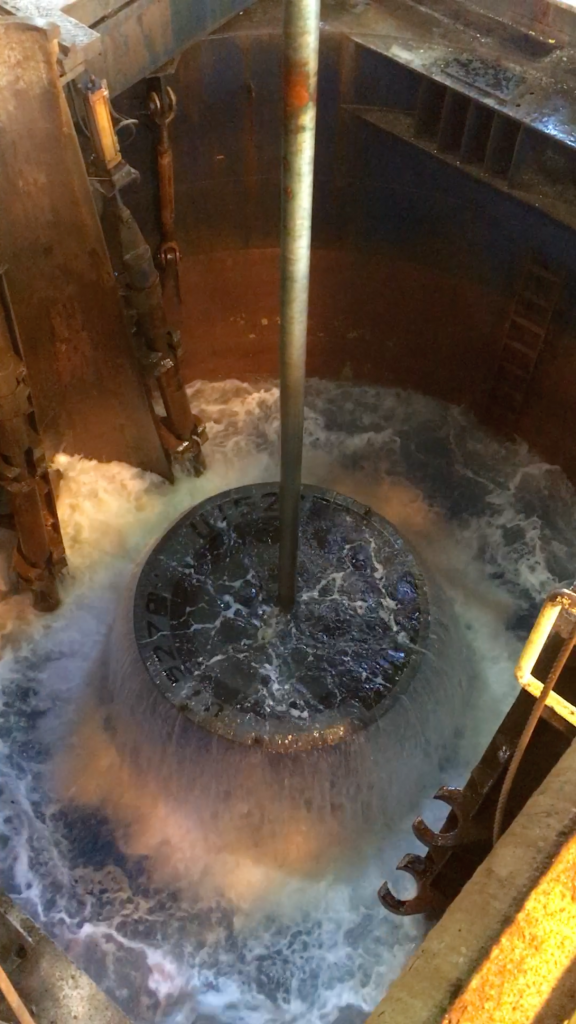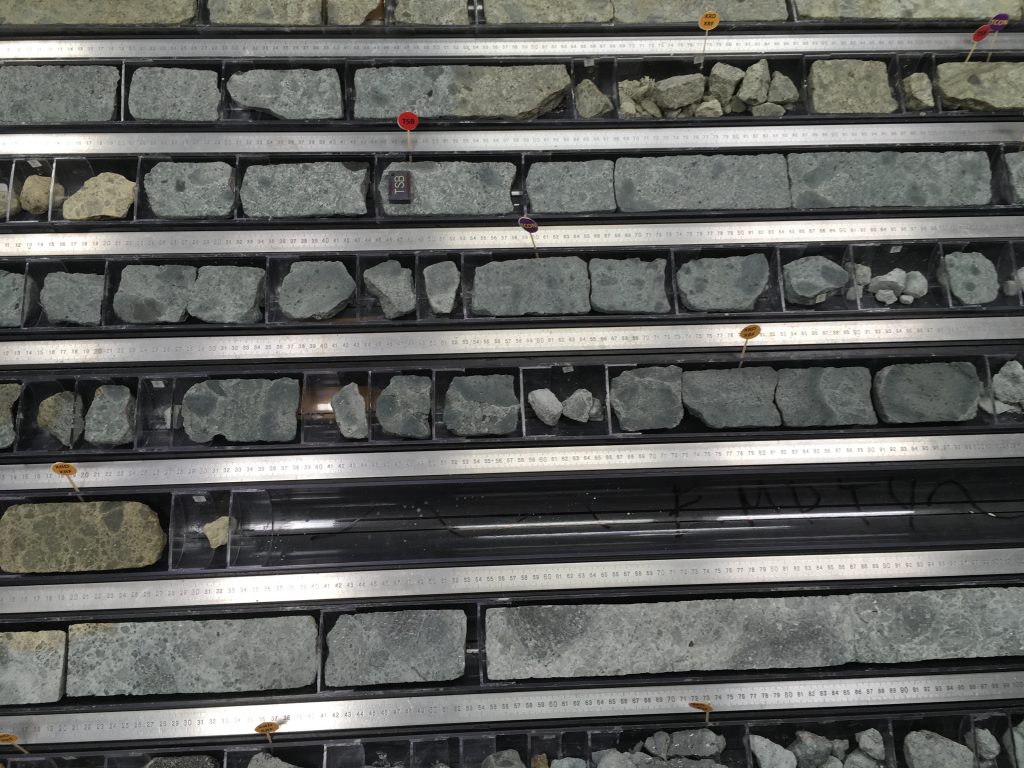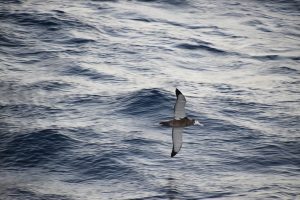Brothers, Boats and Balrogs
Nō te waka rangahau e tere ai
i runga i te Moana-nui-ā-Kiwa
ki ngā whenua o te ao, tēnā koutou katoa.
It was a flurry of excitement that greeted the first consolidated rock hauled up from the volcano deep below. There’s something so pure about seeing adults all ecstatic about some rocks. Of course, I must admit that I was excited too.
These weren’t just some rocks. Rocks can tell us stories. Stories that can span tens of millions of years at a snails-pace, or a single instant of cataclysm. And for those of us on Expedition 376, these rocks will feature in our own stories which we’ll tell in the years to come.

The JOIDES Resolution had endured 7 days of setbacks above the edge of Brothers volcano, one of the most hydrothermally-active undersea volcanoes in the world. Hydrothermal systems like those at Brothers have a major effect on the rock they interact with, altering fresh volcanic lavas into more complex, elementally-enriched rocks. For what are probably sane reasons, nobody had ever drilled into an active undersea volcano until this last week: nobody had ever seen such core samples before. Their stories are still waiting to be told. But Brothers volcano would not give up its secrets so easily.
In these 7 days, we’d lost a drill-bit with spectacular result, unexpectedly hauled up 94m of re-entry system that was supposed to stay sunk, and spun our way through a whopping 187 metres of loose volcanic gravel (which doesn’t make for nice cores). All the while, curators and scientists alike were somewhat amused (if not exasperated) by the modest handfuls of fresh, unaltered volcanic pebble we had to show for it.

So it was a tremendous moment of joy and relief when poles of rock began flying onto the deck. Finally having metres upon metres of this kind of core meant the scientists could get down to some serious analysis.

Whilst the curator and the scientists are civilly divvying up samples, I’m sat down on the Foc’sle deck with a nice view of the rig, pattering away on the keyboard. My role aboard the ship is (along with other things) to mosy around with a camera, whether I’m running live-stream tours of the ship for schools or looking for sweet boomerang-material for the ship’s Instagram. It’s an utter privilege to be aboard such an amazing vessel among so many friendly, inquisitive and passionate people, and to be able to help them share their story with the world. When I was being interviewed for this position, I was asked about previous experience with boats. The longest stint I’d done on a boat was about 8 hours. This will be about 8 weeks. What have I got myself into?
My parents were amusing enough to name me after a hobbit, Peregrin Took, who being none-the-wiser, tags along with an A-team on a daring mission to a volcano, carelessly waking a Balrog of the shadow-realm which kills Gandalf in the process.
Thanks for the good fortune, mum and dad.
I’m no scientist (yet), but I’m pretty confident there are no Balrogs lurking in the realm of shadows at Brothers volcano – there’s simply no evidence (yet). This lack of evidence might be explained by the fact that nobody has ever poked such a volcano with a giant drill (yet) until now. It might also be explained by the well-known fact that Balrog anatomy is not equipped to withstand 150 atmospheres of pressure, and perhaps water in general is not a conducive habitat for beings cloaked in flame.

It is remarkable then, that Brothers volcano, so hostile to humans, wizards and infernal-demons alike should play host to oases of life.
This is an environment where moving just a few centimetres means a water temperature spike from “a smidge above freezing” to “over-poached shrimp”. It’s an environment where the weight of the ocean above is equivalent to 50 blue whales pressing down on a human body; where acids that’d turn you to goo spew from fissures in the seafloor. And if that weren’t tough enough, there’s no sunshine. Ever. There really is no place like home for an extremophile!
As soon as these spectacular cores were up on deck, the microbiologists grabbed a fragment and got to work cultivating their “babies” – they want to know just how far the presently-known limits of life can be pushed by the fungi, bacteria, archea and viruses that live in this hell-on-earth. They expect they might even find species completely new to science! Maybe they’ll let me name one…
Life above the sea isn’t as extreme: the boat is awfully comfortable. She is equipped with 12 computer-operated thrusters that keep her fixed above our target on the seafloor, and as a convenient side-effect, buffer us from the full-force of the ocean waves. As we sleep, they hum with varying intensity, resonating throughout the ship. That might sound annoying, but I find it relaxing for some strange reason (probably all the Brian Eno I listen to). The amazing catering team whip up fantastic kai every 6 hours, with cookies and slices and cheesecake to boot. Cheesecake! 400km from civilisation!

Photo Credit: Tammy Orilio
We’ve got four enormous toroa effortlessly gliding over the waves around us, like the ocean’s ambassadors, and a reminder of the value of strength and perseverance. At night, if the sky is clear, the stars emerge in full force. These are the same stars that my ancestors upon te waka Tainui used to navigate this same ocean, bringing them from Hawai’iki to Aotearoa centuries ago. That vessel took them from one place to another, in terms of distance and in terms of knowledge, and on this expedition, the JOIDES Resolution takes us. If one is to visit the peaceable harbour of Kāwhia today, they might happen upon the burial place of the Tainui, marked by some rocks: rocks that tell a story. Indeed, the Pacific is where the story of ocean exploration began in earnest. These endeavours today are exciting new chapters in this long human chronicle.
Ngā mihi nunui ki a koutou i te pānuitia.
Mā te wā!